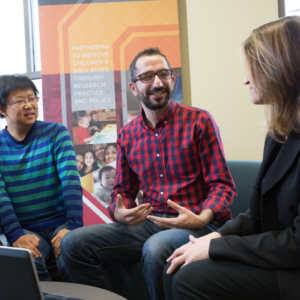 by Trent Cash
by Trent Cash
(September 26, 2018)
When I say the word gifted, what comes to mind? Do you have visions of a third-grader taking Calculus? Do you remember that story in the news about the high school senior who was accepted to every Ivy League College? Or does your mind jump to your own schooling experience where perhaps the “smart” kids disappeared to a special classroom once a week?
While all of these descriptions are common ways to think about giftedness, it has been shown that giftedness is much more than a special talent, above-average intelligence, or even a drive to be the best. A slew of research over the last few decades has shown that gifted individuals – whether children or adults – differ from their neurotypical (read: “normal”) peers in a variety of physiological and psychological ways.
While some cool neuroscience research has shown that gifted brains are actually different than neurotypical brains, I’m personally more interested in the psychology of giftedness, so that’s what I’m here to talk about. But first, let me share with you one of my favorite quotes, which comes from gifted researcher Michael Piechowski who described giftedness as “a different quality of experiencing: vivid, absorbing, penetrating, encompassing, complex, commanding a way of being quiveringly alive.”
Now, as much as I love that quote, I realize that it’s a little bit ethereal – what precisely does it mean to be quiveringly alive? Since this quote was spoken in 1971, gifted researchers have defined this statement through the exploration of a variety of ways in which gifted individuals show intense, sensitive, and highly reactive behavior. These intense behaviors would ultimately be coined as “overexcitabilities” (OEs) in a series of pioneering works by Polish psychologist Kazimierz Dabrowski.
Dabrowski’s research came to the conclusion that gifted individuals express some combination of 5 major OEs: Emotional, Sensual (Sensory), Imaginational, Intellectual, and Psychomotor, each of which represents a way in which gifted individuals may be highly reactive to their environments. The table below explores some of the common characteristics of each OE, and if you’re interested in learning more, check out this article by Sharon Lind for a deeper exploration.
| Overexcitability | Characteristics |
|---|---|
| Emotional | Sensitive; Feelings easily hurt; Complex emotions for age; Strong capacity for empathy |
| Intellectual | Exceptionally curious; Academically ahead of classmates; Always needs answers |
| Psychomotor | Can’t sit still; Moves for the sake of moving; Fidgeting |
| Sensual | Sensitive to stimuli; Can’t handle bright lights, strong smells, loud sounds, coarse fabrics, etc. |
| Imaginational | Highly creative; Imaginary friends into late ages; Makes up stories; Day-dreamer |
These OEs, which parents may first notice during the development of early skills such as language, reading, and mobility, play out by causing gifted individuals to interpret the world around them in a different way than their neurotypical peers – and this can lead to a host of positive AND negative outcomes. For example, while an intellectual OE may predispose a student to acquire information quickly, it also has been empirically shown to be related to perfectionism. And this balance is not exclusive to Intellectual OEs – each OE can present itself in beneficial and harmful ways.
All of this is to say that giftedness is about more than just being smart; it’s about experiencing the world in a different way than the people around you. This difference is exactly why gifted education is so important for children of all ages; it is built with the understanding that gifted individuals are not only gifted learners, but gifted thinkers, gifted feelers, and gifted everythings.
As you can imagine, there are various implications for how we identify, teach, and serve students of all ages. In the state of Ohio, schools are mandated to identify gifted students, but they are not required to provide services of any kind – and this leads to a large variation in the amount and quality of gifted services from district to district, as is reflected in the Ohio Gifted Rankings. If this inequity seems unfair to you, stay tuned for my next blog in which I will be delving into the details of what gifted education looks like in Ohio.
In the meantime, I challenge you to continue pondering the meaning of giftedness, for it is not until we take the time to fully understand the complexities of the gifted mind that we will ever be able to appropriately serve these individuals who learn and think differently.

